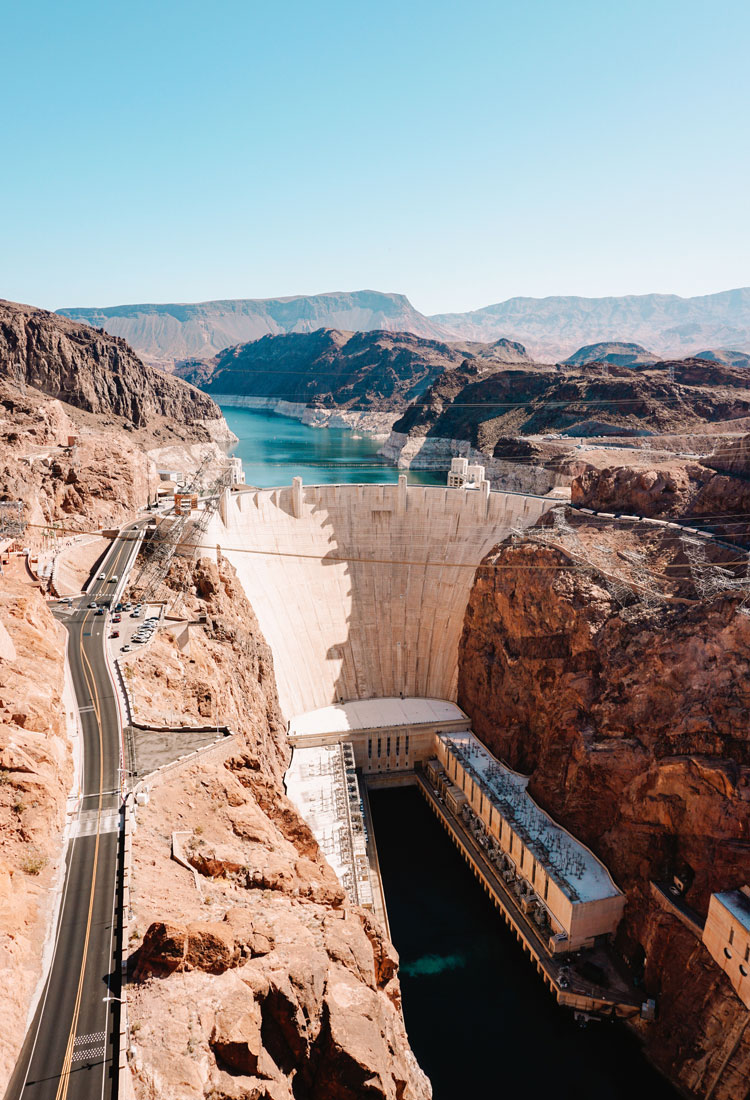Supernatural or super-tricky? At spots around the United States — both human-made and natural — cars and balls seemingly roll uphill, objects mysteriously grow and shrink, and perspectives get warped. Flouting the laws of physics and gravity, these attractions tease your brain, leaving you feeling queasy, uneasy, and just plain confused. Even if most of these roadside attractions are tricks of the eye rather than reality-defying, they’re fascinating pieces of local history and folklore. Make sure to visit these seven sites.
Spook Hill – Lake Wales, Florida
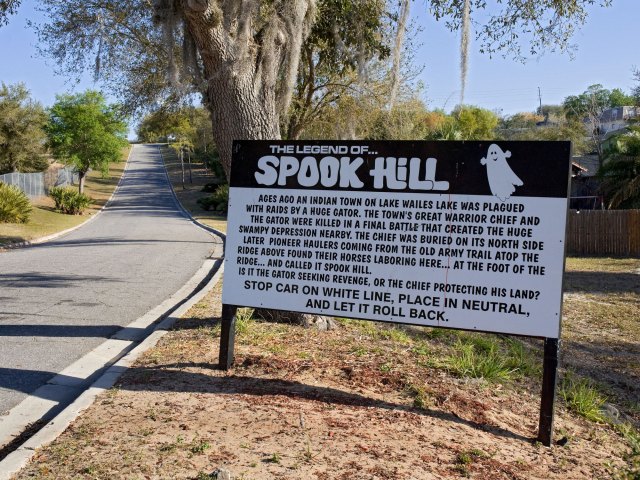
Gravity hills, or spook hills, are said to be gravitational anomalies where visitors can put their cars into neutral at the base of the hill and watch as the vehicles mysteriously creep up the slope. There are several of these hills across the country and around the world, and many have become roadside attractions — especially among fans of the paranormal and supernatural. The truth is, these hills are merely optical illusions — the car (or bottle, or marble) only appears to roll uphill. In actuality, the car is going downhill but the horizon line and other local features of the landscape trick the brain into believing gravity is being defied.
One such spot is Spook Hill, about 50 miles south of Disney World in Florida. Legends abound — some say that before automobiles were popularized, even horses would struggle to go downhill. Another myth is that the hill is actually haunted by a Native American chief or an alligator that terrorized the local village and battled locals at the site. Spook Hill started becoming a popular local attraction around 1950 — coinciding with the Postwar Era of automobiles, interstates, and roadside attractions.
Confusion Hill – Piercy, California
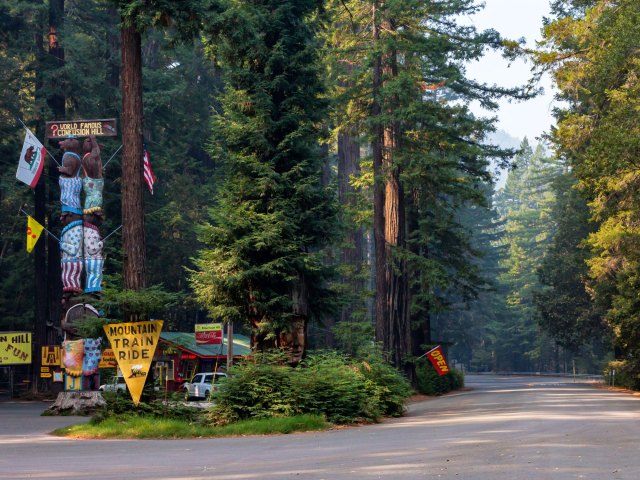
Confusion Hill is, well, pretty confusing. The tourist stop — in operation since 1949 — includes a house full of confounding optical illusions that seem to defy gravity and give most visitors bizarre physical sensations. In addition to the fun house, there’s a miniature train that loops riders through the surrounding redwood forest, plus the world’s tallest freestanding redwood chainsaw carving.
If those aren’t enough to tempt you to Confusion Hill, maybe you’ll catch a rare glimpse of the elusive “chipalope” — the nocturnal spawn of an antelope and a chipmunk that can only be found at this landmark.
The Mystery Spot – Santa Cruz, California
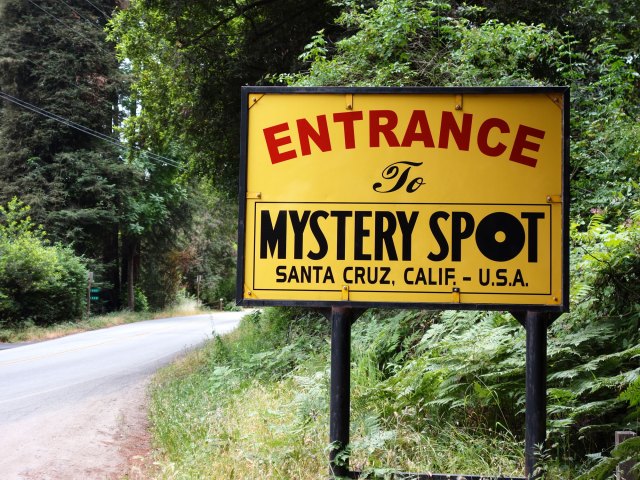
Located in the redwood forests outside of Santa Cruz, the Mystery Spot is described as a gravitational anomaly. Within the Mystery Spot — a circular area about 150 feet across — the laws of physics are seemingly upended. “Discovered” in 1939 and opened to the public just one year later, the “tilt-box” or “gravity house” confuses visitors, who are amazed and perplexed by how height, perspective, and the simple acts of walking and standing defy common sense within the rustic cabin and the circular span surrounding it.
There are plenty of wild theories explaining the site — metals, gases, radiation, spacecraft, and even a hole in the ozone layer. The Mystery Spot remains a popular roadside attraction and has been an official California Historical Landmark since 2014.
The Oregon Vortex – Gold Hill, Oregon

Fans of the Mystery Spot in Santa Cruz may not know that the founder of the Oregon Vortex accused his California colleagues of stealing his ideas. John Litster, the man behind the Oregon Vortex, opened his attraction in 1930. The area was remote, and he claimed that wildlife and Indigenous peoples avoided it because of its strange, logic-defying properties. Legend has it that Litster conducted research experiments in the area. He published his experimental findings, but he may have revealed too much — including the dimensions of the Vortex’s main attraction, a collapsed miner’s shack.
Copycat “mystery spots” soon began opening around the country, and for years, the Vortex had a policy forbidding entry to anyone who might be from California’s Mystery Spot, in case they were out to steal more secrets. Either way, a visit to the Oregon Vortex is brain-scrambling — you’ll witness anomalies like bottles rolling uphill, a suspended weight that can be pushed one way but not the other, and forced perspective that makes you and the objects in your sightline dramatically grow or shrink.
Cosmos Mystery Area – Rapid City, South Dakota
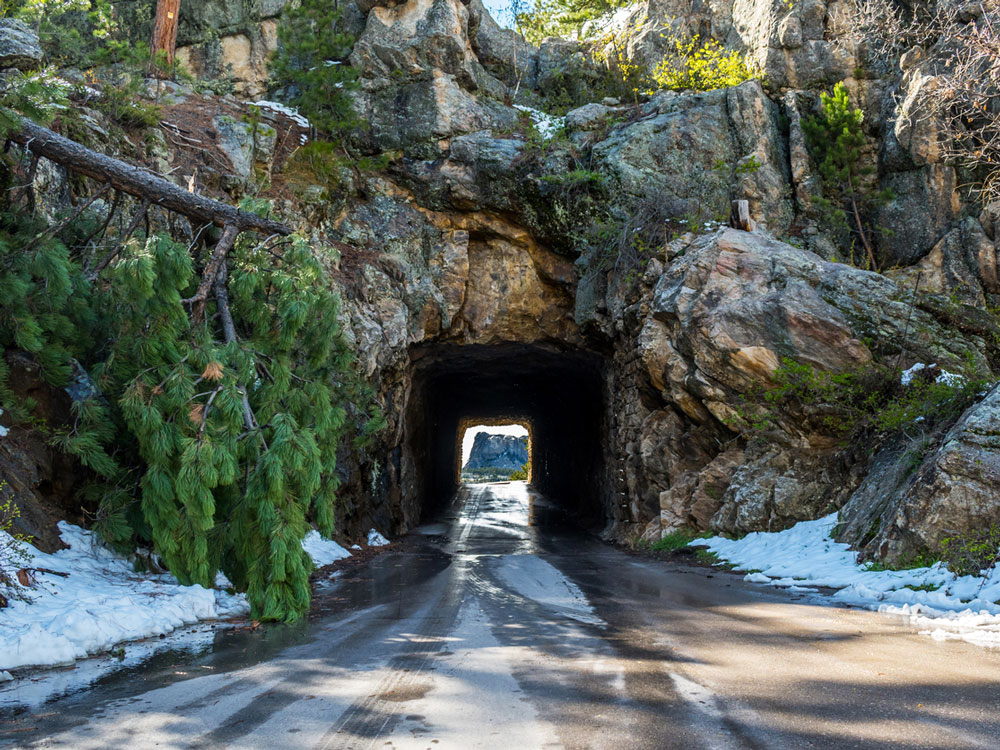
“Discovered” by college students in 1952, the Cosmos Mystery Area is located in the Black Hills of South Dakota. It features a collection of uniquely built structures that can make visitors — embarking on a 30-minute tour — believe that they’re climbing up walls, pulled in every which way and hanging from rafters to stay upright. The series of optical illusions at this roadside attraction is paired with a geode mine where you can discover a variety of crystals plus a scenic picnic area.
The Mystery Hole – Fayetteville, West Virginia
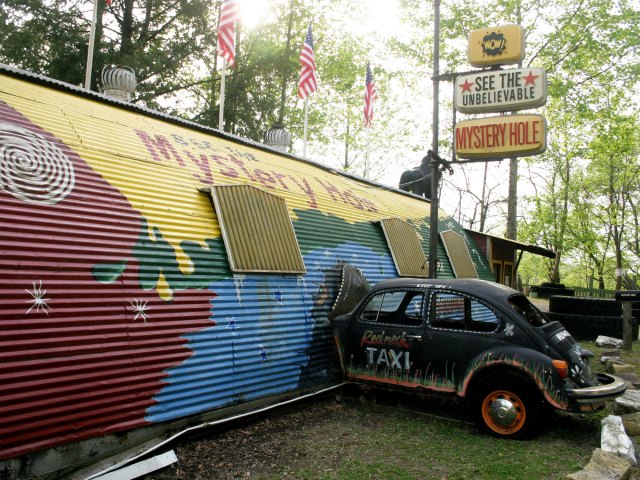
Another “mystery, another roadside attraction, the Mystery Hole, doesn’t actually defy gravity, but it sure seems that way. Located near Hawks Nest State Park and Cathedral Falls, this popular tourist spot dates back to the 1970s. After being closed for many years, the site was reopened and currently features a warren of underground rooms built to warp your perspective, complete with floors and walls at odd angles, balls rolling uphill, and tour guides sitting in chairs that appear to balance on narrow strips of wood. The tour is famously fun and only 10 minutes long — be sure to check out the Volkswagen Beetle that appears to have crashed into the structure’s corrugated metal walls.
Hoover Dam – Nevada-Arizona Border
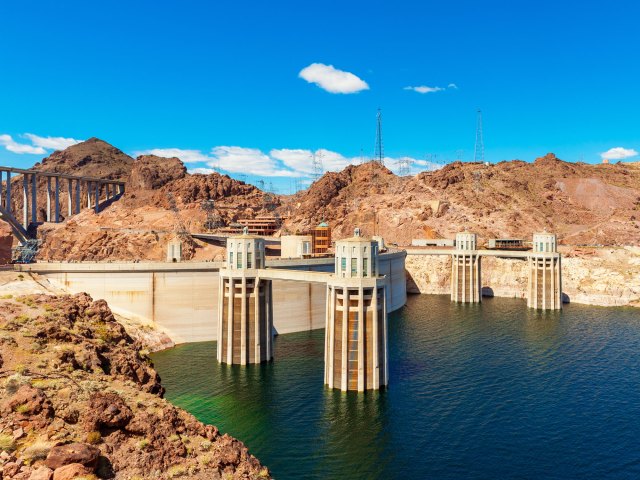
Constructed during the Great Depression on the border of Arizona and Nevada, the Hoover Dam controls floods, provides water for irrigation, and produces hydroelectric power. The towering structure is located on the Colorado River, and its construction formed the massive Lake Mead.
It’s also a mind-bending spot that seems to defy gravity: The Dam’s updraft is so strong that lightweight substances, such as water, can flow upward. Try standing along the edge and pour water over the dam. Instead of flowing downward, your water will spray upward.
Featured image credit: Emily-Jo Sutcliffe/ Unsplash
More from our network
Daily Passport is part of Optimism, which publishes content that uplifts, informs, and inspires.






